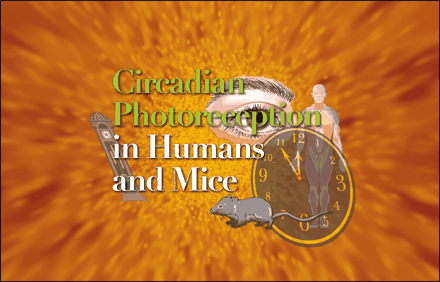Circadian Photoreception in Humans and Mice
- Department Biochemistry and Biophysics Mary Ellen Jones Building, CB7260 University of North Carolina School of Medicine Chapel Hill, NC 27599
- Address correspondence to AS. E-mail Aziz_Sancar{at}med.unc.edu; fax 919-843-8627.
Abstract
Circadian rhythms are the endogenous oscillations, occurring with a periodicity of approximately twenty-four hours, in the biochemical and behavioral functions of organisms. In mammals, the phase and period of the rhythm are synchronized to the daily light-dark cycle by light input through the eye. Certain retinal degenerative diseases affecting the photoreceptor cells, both rods and cones, in the outer retina reveal that classical opsins (i.e., rhodopsin and color opsins located in these cells) are essential for vision, but are not required for circadian photoreception. The mammalian cryptochromes and melanopsin (and possibly other opsin family pigments) have been proposed as circadian photoreceptor pigments that exist in the inner retina. Genetic analysis indicates that the cryptochromes, which contain flavin and folate as the light-absorbing cofactors, are the primary circadian photoreceptors. The classical photoreceptors in the outer retina, and melanopsin or other minor opsins in the inner retina, may perform redundant functions in circadian rhythmicity.

- © American Society for Pharmacology and Experimental Theraputics 2002



